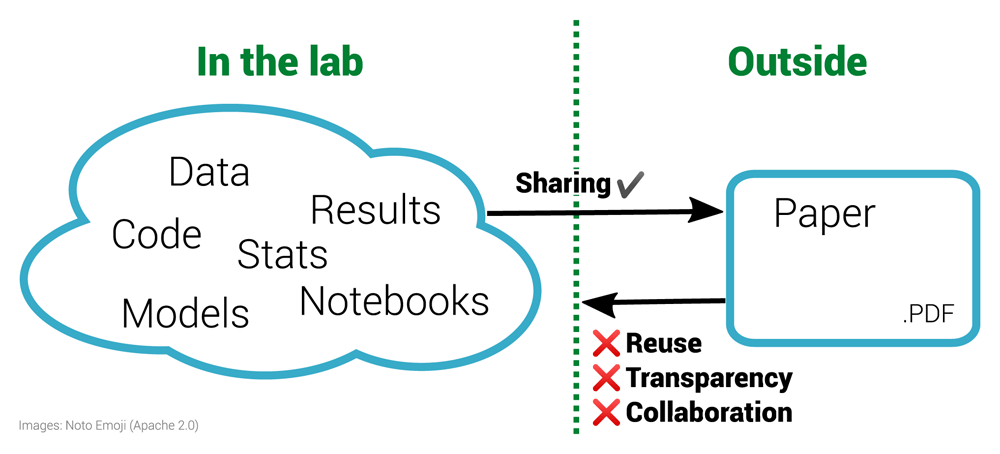Concept
Reproducibility & Replicability
GEOTEC, Universitat Jaume I
Apr 22, 2024
Today’s reality
Computation has an increasing role in scientific research (Stodden and Miguez 2014)
Many and diverse computational sciences (bio-informatics, geophysics, material science, fluid mechanics, climate modelling, computational chemistry, … (Barba 2021)
- As results are increasingly produced by complex computational processes…
…the traditional methods section of a scientific paper is no longer sufficient
The inverse problem

‘Show me’, not ‘trust me’

Show me = help me if you can
“If I say: ‘here’s my work’ and it’s wrong, I might have erred, but at least I am honest”.
Trust me = catch me if you can
“If I publish a paper long on results but short on methods, and it’s wrong, that makes me untrustworthy.”
Definitions
{Re}* terms
Reproducible research: Authors provide all the necessary data and the computer codes to run the analysis again, re-creating the results.
Reproducibility: A study is reproducible if all of the code and data used to generate the numbers and figures in the paper are available and exactly produce the published results.
Replication: A study that arrives at the same scientific findings as another study, collecting new data (possibly with different methods) and completing new analyses.
Replicability: A study is replicable if an identical experiment can be performed like the first study and the statistical results are consistent.
False discovery: A study is a false discovery if the result presented in the study produces the wrong answer to the question of interest.
Our view
A reproducible paper ensures a reader can recreate the computational workflow of a study, including the prerequisite knowledge and computational environment
The former implies the scientific argument to be understandable and sound
The latter requires a detailed description of used software and data, and both being openly available
We define reproducibility to mean
computational reproducibility
Course definition
REPRODUCIBILITY involves ORIGINAL data and (computational) methods
REPLICABILITY involves NEW data and/or (computational) methods
Multiple interpretations
Reproducibility spectrum

References

